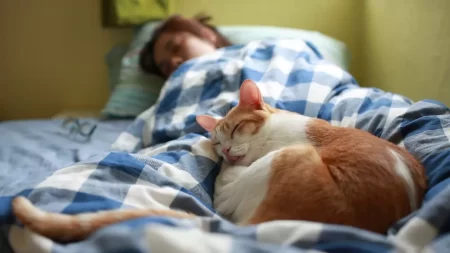Cats are widely considered to be one of the cutest animals on the planet. There are many reasons for this, including their physical features, playful behavior, and unique personalities.
One of the most obvious reasons why people find cats cute is their appearance. Cats have many features that are considered to be endearing, such as big eyes, round heads, soft fur, and playful movements. These features are similar to those of human babies, which may trigger our innate caregiving instincts.
In addition to their physical appearance, cats also have a number of behavioral traits that make them seem cute. For example, cats are known for being affectionate and playful creatures. They enjoy interacting with their owners and often engage in silly or endearing behaviors. For example, a cat may rub against its owner’s legs, purr loudly, or play with a string toy.
The Science Behind Cat Cuteness
Cats have many physical and behavioral traits that appeal to our brains on a primal level. These traits make us instinctively want to care for cats.
Subliminal Appeal of Infantile Features
Cats retain kitten-like features well into adulthood. Their large eyes, soft round faces, and clumsy movements remind us of human babies. This subconsciously triggers our instincts to nurture and protect them.
Protective Instincts
Cats are relatively small animals. Their size makes them seem vulnerable, evoking our protective urges. We want to shelter cats and keep them safe from harm.
Response to Meows and Purrs
A cat’s high-pitched meows and rumbly purrs mimic the cries of human infants. Our brains are wired to respond to such vocalizations, so we feel compelled to attend to a meowing or purring cat.
Healing Properties of Purring
A cat’s purr vibrates at a frequency that promotes bone strength and wound healing. Interacting with a purring cat can literally help improve our health.
Blinking as Communication
Cats blink slowly at people they trust. Mimicking this eye contact forms an affectionate bond. The vulnerability implied in closing their eyes makes cats seem more endearing.
Empathy Towards Our Emotions
Cats are very observant and seem to recognize our emotional states. Their presence during times of stress or sadness is comforting.
What Makes Cats Appealing?
Apart from the scientific reasons, there are also some aesthetic and psychological reasons why cats are so cute. One of them is their soft and round physical features. Cats have smooth curves and contours that make them pleasing to the eye. They also have symmetrical faces that create a sense of harmony and balance.
Another reason why cats are appealing is their soft fur. Fur provides warmth and comfort, which makes us want to touch and stroke them. Fur also stimulates our tactile senses and releases endorphins in our brains, which are natural painkillers and mood enhancers.
Cats also have high-pitched meows and comforting purrs that make them sound cute. High-pitched sounds are associated with youthfulness and innocence, which evoke positive emotions in us. Purring sounds are associated with relaxation and satisfaction, which make us feel calm and contented.
Cats are also very playful, which adds to their cuteness. They have a natural curiosity and a sense of adventure that makes them explore their surroundings. They also have a knack for finding fun in ordinary objects, such as boxes, balls, or strings. They can entertain themselves and us with their antics and tricks.
The Unique Cuteness of Cats
Cats are not only cute in general, but they are also cute in a unique way. They differ from other animals in terms of their cuteness because they have evolved to adapt to human society. Cats were domesticated about 10,000 years ago by humans who valued them for their pest control abilities. Since then, cats have developed traits that make them more compatible with humans, such as social skills, intelligence, and personality.
Cats also have evolutionary reasons for being cute. Being cute helps them survive and thrive in a competitive environment. By being cute, they can attract human attention and resources, such as food, shelter, and protection. They can also manipulate human emotions and behavior, such as making us feel guilty, rewarding us with affection, or asking for favors.
Cats also have a significant emotional and psychological impact on us. They can improve our mental health and well-being by reducing our loneliness, depression, anxiety, and stress. They can also enhance our physical health by lowering our blood pressure, cholesterol, and risk of heart disease. They can also boost our social life by helping us make friends, find partners, or join communities.







